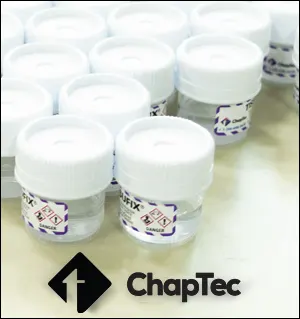TISSUFIX, what improvement does it bring?
For a while now, histology laboratories have standardized tissue fixation using 10% neutral buffered formaldehyde. Proper fixation is essential because all the following laboratory procedures rely on adequate fixation to render quality results possible.
In an ideal world, under optimal conditions, most tissues would be well fixed with this solution. However, the world we live in is not always being optimal. Here are a few challenges that laboratories encounter and that can hamper the fixation results.
Tissue cut too thick as pathologists an PA tend to want more than less tissue, while the recommended fixation protocols are for 3 mm thick tissue
Tissue samples arriving late in the day at the laboratory without exact knowledge of when it was immersed in formalin, if it was at all. Since tissue processors usually run overnight, one could be tempted to put this tissue in the run about to start relying on post fixation that’s happening in the processor. This is unfortunately often not enough.
Tissue coming from OR that was left on the bench until someone came out and was able to place the tissue I formalin. Usually the formaldehyde containers are not opened in the OR because of the formaldehyde vapors emitted that could be detrimental to the patient and staff alike. During this waiting period, enzymes start their work and the necrosis process gets underway. Unless the tissue if fixed very rapidly, this process could lead to important structures or proteins being damaged past the point of being adequate to provide the information required by the pathologist to diagnose the tissue.
Tissue being excised in a remote location in the colder months and shipped to the laboratory may be exposed to temperatures low enough that the formalin, which is made of 90%+ water, may freeze and the tissue may not be fixed at all and completely lost
TISSUFIX is a neutral buffered formaldehyde solution whose formula has been optimized to provide faster fixation. Evaluations performed comparing it to NBF have demonstrated that if fixes 30 to 35% faster than normal formalin. By using the same basic ingredients, it provides similar fixation results, just happening quicker.
In the examples below, faster fixation will provide more complete and adequate fixation of thick pieces of tissue. It will be more forgiving for tissue not exposed to the fixative a long time because it the same period it will have penetrated deeper, enabling a possible acceptable fixation result even for shorter periods that the recommended 18-24 hours. As soon as a tissue left on the bench is immersed, the more rapid penetration of TissuFix will help diminishing or preventing necrosis altogether. And TissuFix is more resistant to freezing than NBF offering a better chance of receiving adequately fixed tissue from remote locations in the winter time.
Multiple laboratories have experimented with TissuFix over the past 30 years and are sold on its advantages. Implementing its use will help in providing better results to the pathologist for enhanced diagnostic information for the clinician.
1. Why is tissue fixation an essential step in histology?
Because all subsequent steps (processing, embedding, staining, and immunohistochemical analysis) depend on proper fixation in order to obtain reliable and interpretable results for the pathologist.
2. Which fixative is most commonly used in histology laboratories?
Neutral buffered formalin at 10% (NBF) is primarily used because it provides effective and stable tissue fixation under normal conditions.
3. What factors can compromise proper fixation?
Several common situations can impair fixation quality:Tissue samples that are too thick (often > 3 mm recommended).
Samples arriving late at the lab, making fixation time uncertain.
Tissue left on the bench before immersion, allowing enzymes to begin autolysis and necrosis.
Transport in cold environments where formalin (≈90% water) can freeze, preventing fixation.
4. Why are tissues left outside fixative at risk of damage?
Because cellular enzymes begin degrading structures and proteins immediately after excision.
If fixation does not occur quickly, these alterations can become irreversible, making diagnosis difficult or impossible.
5. Why are tissues shipped in cold conditions at risk?
Neutral buffered formalin contains a high percentage of water → it can freeze at low temperatures.
If the fixative freezes, fixation does not occur, which may lead to complete loss of the tissue sample.
6. What is TissuFix®?
TissuFix® is a neutral buffered formaldehyde solution formulated to:Penetrate tissue more rapidly
Fix more efficiently
Provide the same morphological results as standard NBF
7. How is TissuFix® different from standard neutral buffered formalin (NBF)?
Comparative evaluations have shown that TissuFix®:Fixes tissues 30–35% faster
Achieves more complete fixation in thicker specimens
Reduces necrotic damage when fixation is delayed
Is more resistant to freezing, preserving specimens better during winter transport
8. In which situations is TissuFix® particularly advantageous?
TissuFix® is especially useful when:Tissue samples are thick
Fixation timing is uncertain or delayed
Samples are shipped from distant locations
The laboratory must meet tight diagnostic turnaround times
9. What do laboratories that have tested TissuFix say?
Many laboratories have used it for over 30 years and confirm its advantages:
→ Safer and more reliable fixation
→ Improved histological quality
| 470, avenue Laurendeau, Montréal-Est (Quebec) H1B 5M2 | |||
| Phone: | 514 498-3620 | Toll free: | 833 498-3620 |
| Email: | chaptec@chaptec.com | ||


